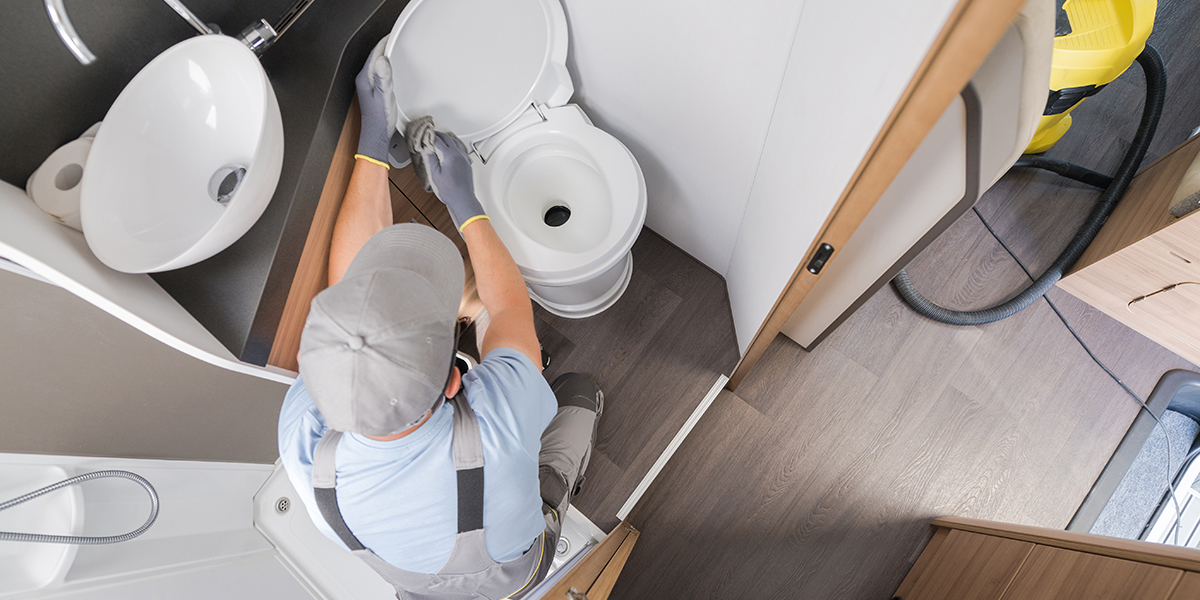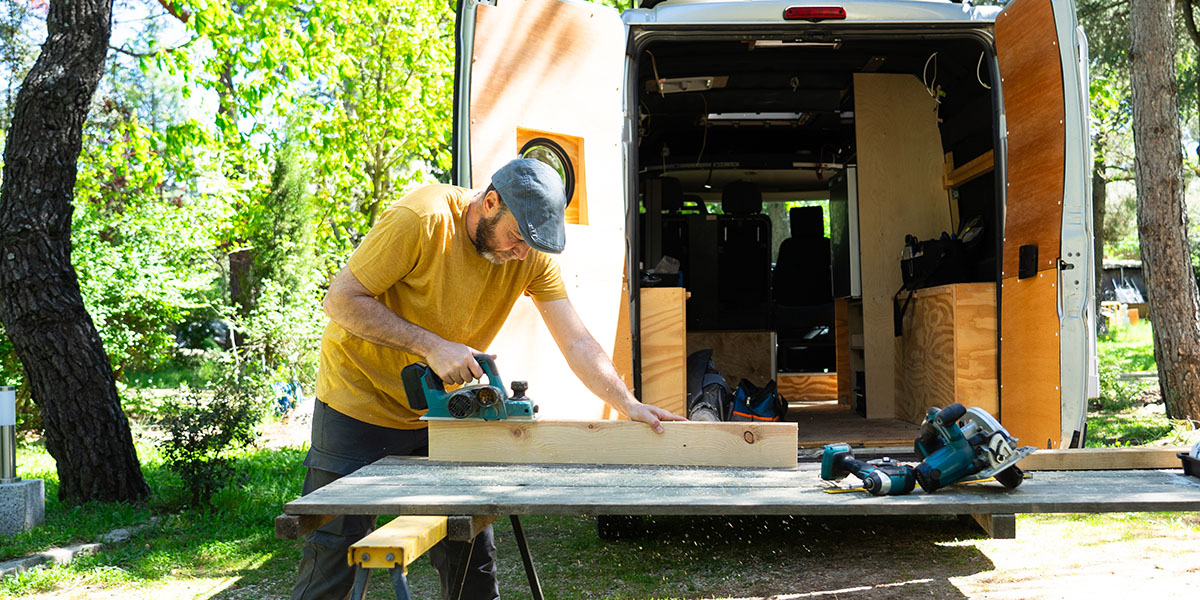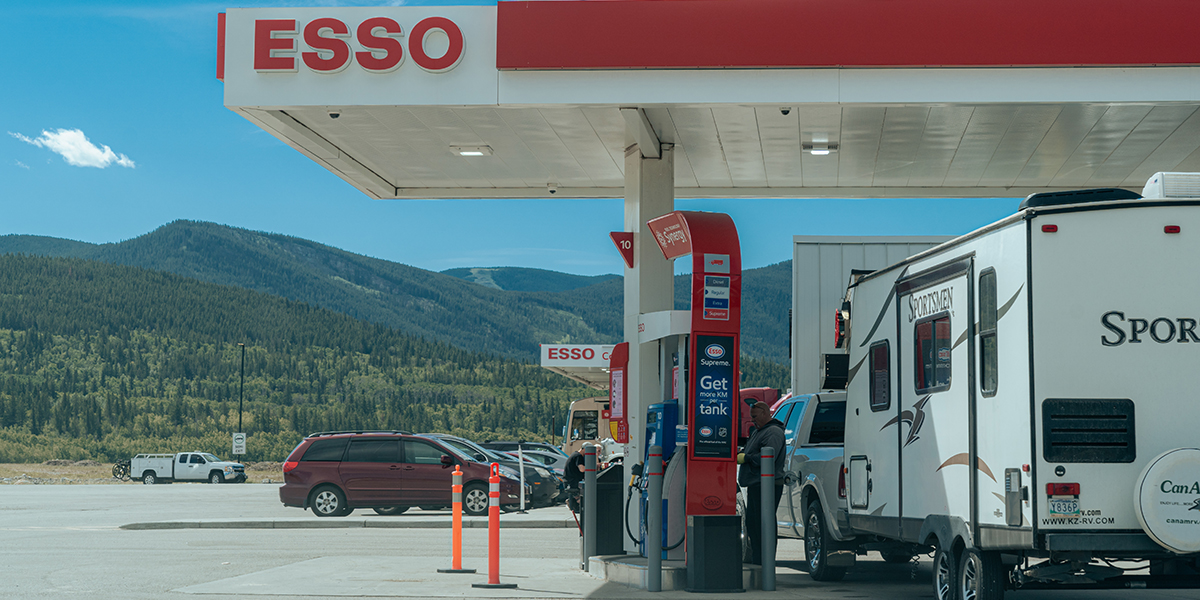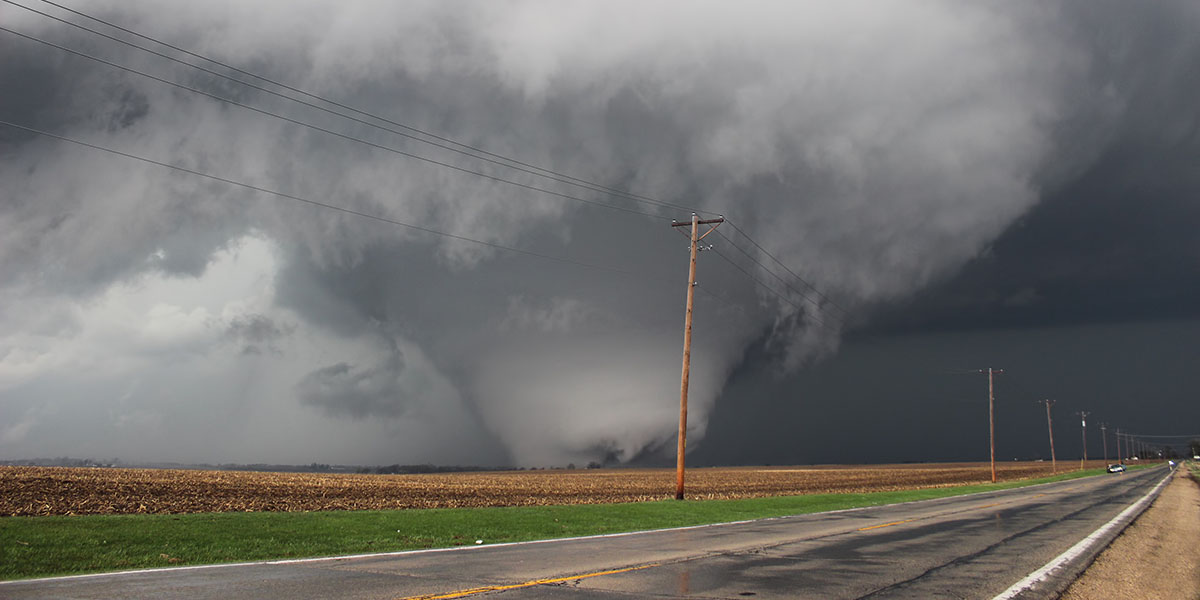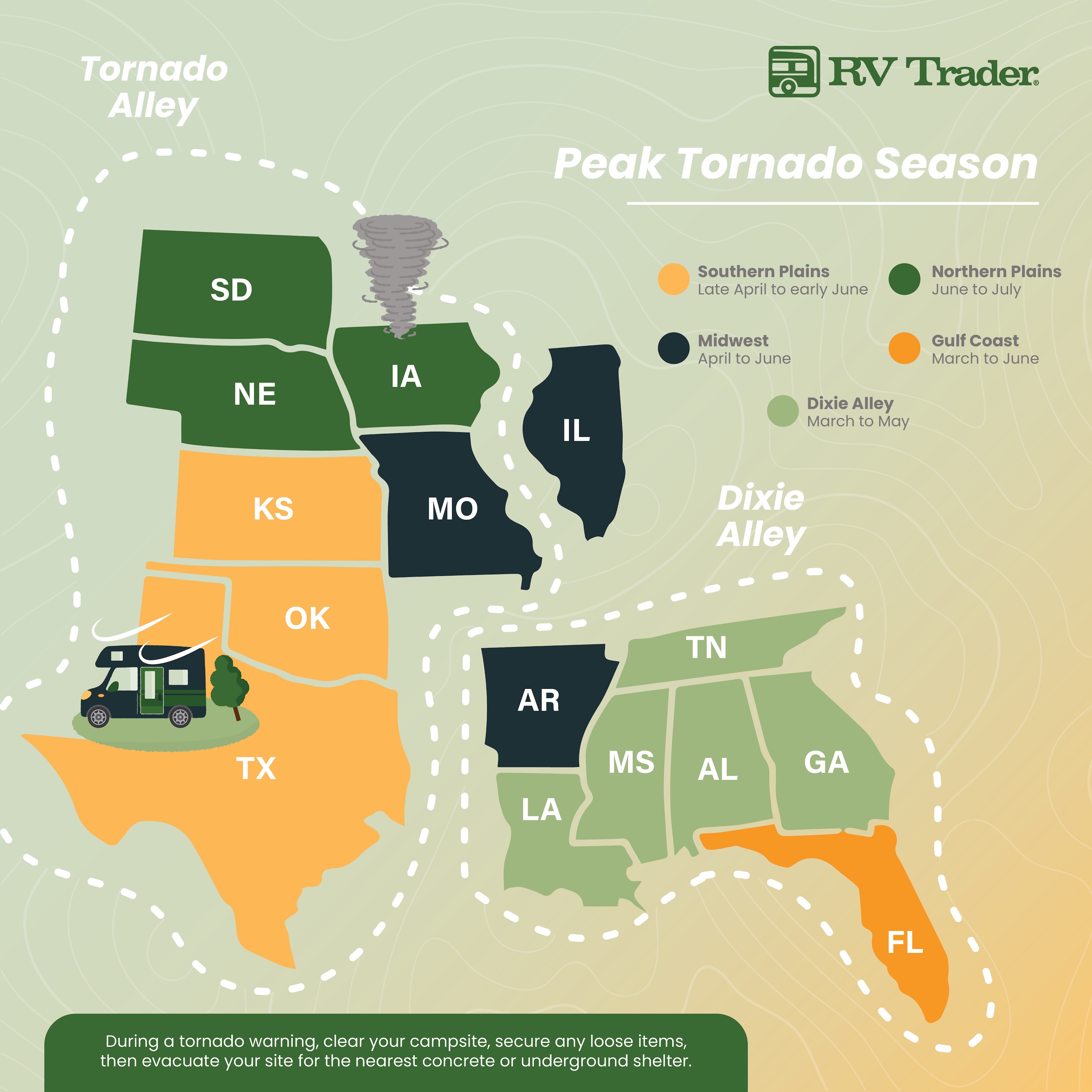Ah, the joys of RV life – the open road, the freedom to roam, the adventures waiting around every bend, and the occasional spray of toilet water to the face! Let’s be honest, not every part of RV living is glamorous. Take, for example, the humble RV toilet. It’s a crucial component of your home on wheels, but one that often gets overlooked until it’s too late.
If you’ve found yourself in need of fixing or replacing your RV toilet, fear not! This guide will walk you through the process step-by-step, with a personal experience that even I had to laugh at – well, I laughed days later, not in the moment.
My Frozen RV Toilet Fiasco
This is my somewhat long story and is mostly for laughs, so if you wish to skip to the how-to section, click here.
Let me set the scene: It’s Idaho in the winter, and before you ask who goes camping in Idaho in the winter, that would be us. We were working on a contract that had us stay at an RV resort with hotel rooms. The temperature was going to drop into the negatives with windchill, so we stayed in a cozy hotel room, thinking that we would be fine leaving the heat on overnight. That was my first mistake. The following is what transpired.
My breath fogs in the air as I step outside my hotel room to slip and slide my way over the ice and snow in the parking lot towards my RV. I’m bundled up and look like the Michelin man as I waddle over and into the less-than-freezing inside of my home on wheels where I realize that I may have set the heat a little low trying to conserve power and gas. I turn on the water pump, the motor churns to life, and … sprinkler sounds come from the bathroom. Oops, I warmed the inside of the RV, but I left that bathroom in the back a little too exposed to the weather.
I open the bathroom door, water is shooting out from behind our RV toilet, and I know it’s up to me to fix it. After I shut off the water pump and arm myself with tools, I venture into the belly of the beast. As I begin disconnecting the toilet, disaster strikes. A specific connector, apparently not built to withstand arctic conditions, snaps clean off. I spout a few four-letter words, waddle back to the hotel room, and inform my wife, “We have to find an RV parts store.”
We spent the next 30 minutes looking for somewhere that would have our specific toilet and the specific part I needed. The closest place was a Camping World about an hour away. When we arrived, they had the part ready, I purchased it and immediately went to work in the parking lot. After about 30 or 40 minutes of uncomfortably working on the toilet, I smiled and said, “Wow, that wasn’t too bad.” Of course, that’s when the fun really started. I asked my wife to turn on the water pump, and after a few seconds of seemingly successful silence, I leaned in, only to catch a jet of freezing cold water sprayed directly into my face.
Luckily the water was coming from the outside connection and not a backfire, if you catch my drift. It turns out that trying to lazily skip a few steps wasn’t the best idea. Instead of taking the toilet out completely to work on the problem, I tried to work directly on the issue that needed fixing. After a few more four letter words – which my wife said were pointless, but they definitely made me feel a little better at the time – I inspected everything further and thought that maybe some other connectors and washers would be a good idea. I was confident that a stop at the hardware store for a few items and proper installation would do the trick.
Since we were trying to make it pretty far on our travel day, we drove another two hours south to a Home Depot, where I proceeded take out the whole toilet to try and do it right. I went into the store and purchased everything I thought I would need and started taking out the toilet. It took me about 45 minutes out in the cold to take out the toilet, replace some connections, and add a little insulation around the tubing for future protection. When I put everything back together, I turned on the water, and sure enough, I got sprayed right in the face again. It turns out that in my haste to finally finish this project, I didn’t properly connect the new piece I purchased in the first place.
At that point the four-letter words were really flowing, but I set out to start from the beginning again. After getting the toilet out, I of course fumbled one of the unique screws that holds it in place right down the poop-chute, and I nearly lost my mind. My wife, somewhere between aggravation and laughter, calmed me down, and then set out to help me in my final attempt after I took about 20 minutes to find a screw that would actually fit our toilet. Together, we were finally able to properly install the toilet and the replacement part.
It turns out that doing things slowly, thoroughly, and completely from the beginning, is always the best way to do things. It also shows that while I try to do things myself, getting help from others is good practice too. And finally, as much as I hate to admit it, sometimes my wife does know best. I won’t tell her it’s not more than Google, even though I feel like she may think so, but she is brilliant and super handy too. I love her, and she’s the best partner I can ever have for all of my crazy life adventures.
Now, for those that want to do it right the first time around, below are the tools and steps you should take to properly fix or replace your RV toilet.
Tools and Materials Needed
Before diving into the replacement process, gather the following tools and materials:
- adjustable wrench
- screwdriver set
- plumber’s tape (Teflon tape)
- replacement part or new RV toilet
- rubber gloves
- towels or rags
- bucket
Having these items on hand will ensure you’re prepared for the job without unnecessary interruptions.
Step-by-Step Instructions
Before beginning the installation, the most important aspect of this project is comparing your toilet and the specs of your RV bathroom with a possible replacement part or new RV toilet. You don’t want to start the project only to realize that what you purchased is not compatible.
Step 1: Turn Off the Water Supply
Begin by turning off the water supply to your RV. This will prevent any unexpected sprays of water (trust me, you’ll want to avoid this). Locate the water pump switch and ensure it’s off, or turn off the main water supply if you’re hooked up to an external source.
Step 2: Drain the Toilet
Flush the toilet to drain as much water as possible. Use towels or rags to soak up any remaining water in the bowl. This will minimize spills and make the process cleaner.
Step 3: Disconnect the Water Line
Use a wrench to disconnect the water line from the back of the toilet. Be prepared for a small amount of water to spill out. Have your bucket and towels ready to catch any drips.
Step 4: Remove the Old Toilet
Unscrew the bolts at the base of the toilet using a wrench or screwdriver. These bolts can sometimes be a bit stubborn, so applying some WD-40 or other lubricant and letting it sit for a few minutes may help. Lift the old toilet off the flange and set it aside. You might need an extra hand to help maneuver it out of the tight space.
Step 5: Prepare the Flange
Clean the flange area thoroughly with a rag. Remove any old wax or gasket material to ensure a good seal with the new toilet. Ensure the surface is smooth and free of debris. If the flange is damaged, this is the time to replace it to avoid future leaks.
Step 6: Install the New Toilet or Replacement Part
Place the new toilet onto the flange, aligning the bolt holes. Secure it with the provided bolts, tightening them evenly to avoid cracking the base. It’s important to tighten the bolts just enough to secure the toilet without over-tightening, which can cause damage.
Step 7: Reconnect the Water Line
Attach the water line to the new toilet, ensuring it’s snug and secure. Use plumber’s tape (Teflon tape) on the threads to prevent leaks. Double-check that the connection is tight but not overly tight, to avoid damaging the fittings.
Step 8: Turn On the Water Supply
Turn the water supply back on and check for leaks. If everything looks good, flush the toilet a few times to ensure proper operation. Monitor for any slow leaks over the next few hours to catch any issues early.
Common Challenges
Replacing an RV toilet isn’t always smooth sailing, as you can picture if you read my story. Here are some common challenges you might face, along with tips to overcome them:
Leaky Connections
Double-check that all connections are tight and secure. Use plumber’s tape to seal threads. If you notice any leaks, tighten the connections slightly more and ensure the plumber’s tape is correctly applied.
Stubborn Bolts
If bolts are rusted or difficult to remove, apply a lubricant or penetrating oil and let it sit for a few minutes before attempting to loosen them. A little patience with your elbow grease can go a long way.
Misaligned Flange
Ensure the flange is clean and properly aligned before securing the new toilet. If it’s damaged, consider replacing the flange as well. This can prevent future leaks and ensure a secure fit.
Maintenance Tips
To keep your new RV toilet in top condition, follow these maintenance tips:
Regular Cleaning
Clean the toilet regularly with RV-friendly cleaners to prevent buildup and odors. Avoid harsh chemicals that can damage the seals and components.
Check for Leaks
Periodically inspect the water connections for leaks and tighten as needed. Early detection can prevent water damage and save you from more extensive repairs.
Winterize Properly
If you’ll be camping in cold weather, take steps to winterize your RV to prevent freeze damage. Drain the water lines, add antifreeze as necessary, and insulate exposed pipes and connectors. If you are RVing in cold weather, be sure that your pipes, tanks, and bathroom have proper ventilation and heating to prevent freezing.
Conclusion
Replacing an RV toilet might not be the most glamorous task, but with the right tools, materials, patience, and in some cases, a good sense of humor, it can be a manageable experience for most DIYers. Whether you’re dealing with a frozen water fiasco or just looking to upgrade, this guide has you covered. Happy RVing, and may your travels be filled with adventure and well-functioning toilets!
